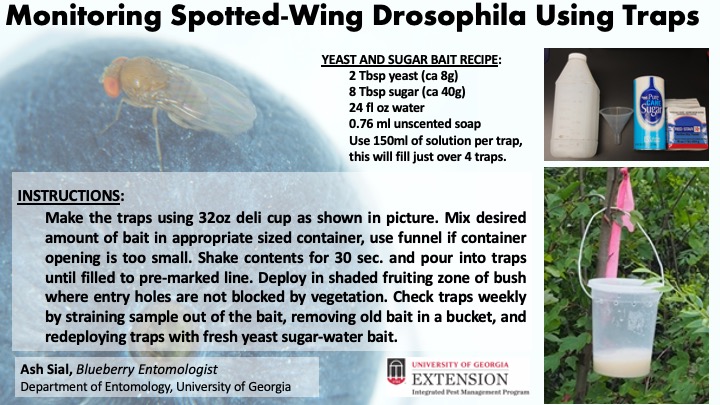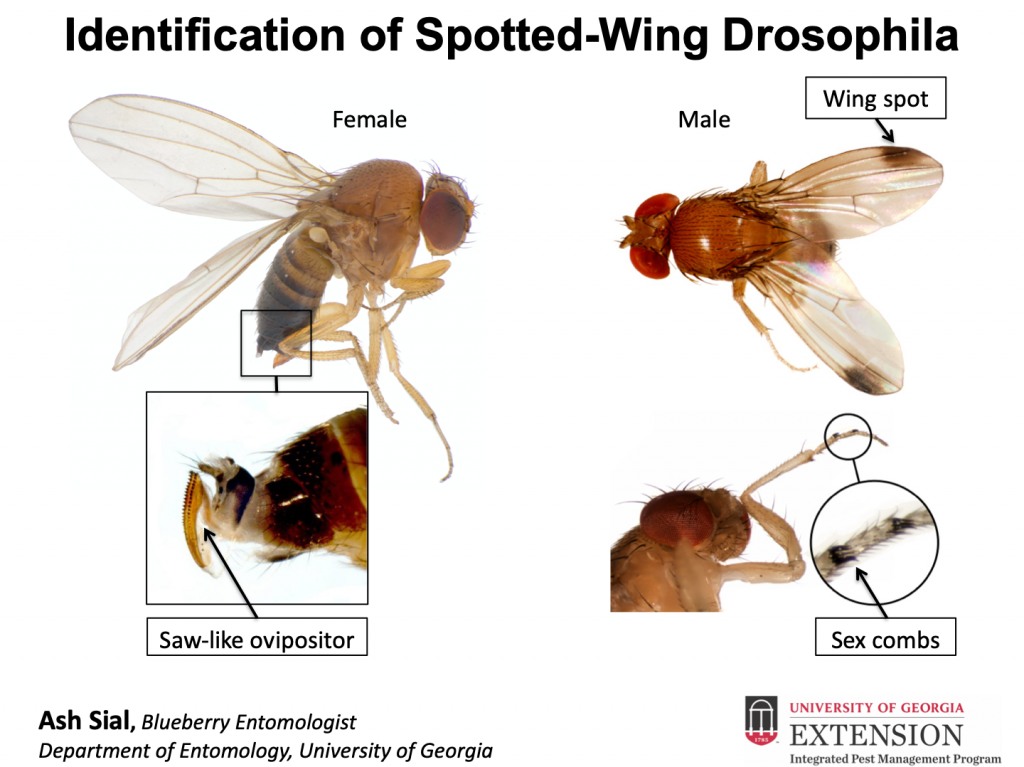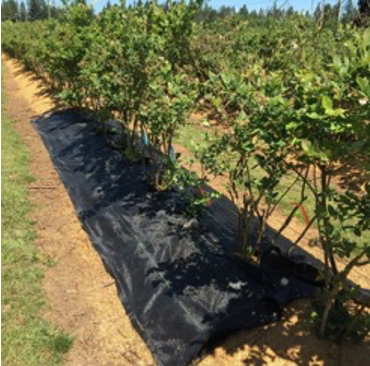
While most of the world is dealing with shelter-in-place orders and faltering economies, the plants just keep on growing and the pests just keep on coming. Many of the spring field days have been cancelled or postponed this year due to the Coronavirus pandemic, but a few research teams have forged ahead in this unprecedented territory to pull together virtual field days so that growers and Extension agents continue to get the best information for the upcoming growing season.
The UGA Blueberry Team pivoted with short notice and transformed their scheduled Blueberry IPM Field Day into the first ever Virtual Field Day on April 7th this year. Despite the short-notice and unconventional setting, the field day was a huge success, with 73 growers, agents, and industry professionals in attendance.
The Virtual Field Day presentations covered the biology and management of insect pests given by University of Georgia IPM Coordinator and Blueberry Entomologist Dr. Ash Sial, a blueberry pollination update presented by Dr. Keith Delaplane, and a sprayer calibration update by Dr. Glen Rains. Following the presentations, growers were invited to join in on a roundtable discussion to share the latest information in blueberry production in Georgia. All attendees received Pesticide Applicator license credits.
“This is the time when weekly monitoring efforts are critical for blueberry growers, from fruit-set until the end of harvest,” said Sial, “insect pests may already be present in blueberry field, feeding on or infesting flowers, buds, foliage and stems, fruit and roots.”
There are many insect pests of blueberries, including gall midge, thrips, blueberry maggot, blueberry bud mite, scales, Glassy Wing Sharpshooter, spider mites, blueberry stem borer, and ground pearls, but by far, the most devastating of all is the Spotted Wing Drosophila (SWD).
“This is why monitoring is so essential for blueberry growers, it’s very easy to set up home-made traps around fields to identify what pests you have, and if you see SWD you need to begin management immediately,” cautioned Sial.

SWD are an incredibly persistent and devastating pest of soft fruits, having even one egg or larva in a single berry can render an entire harvest worthless as distributors will not accept an infested crop. Once SWD is detected in the traps while the berries are ripening or ripe, weekly applications of registered insecticides will need to be applied to protect the fruit.

Managing SWD requires a rigorous, persistent and diverse management plan that includes a combination of chemical and cultural controls. Growers can find conventional and organic chemical control recommendations in both the Georgia Pest Management Handbook and the Regional Blueberry IPM Guide.
“While selecting insecticides for SWD control in blueberries, take into account the efficacy, chemical class, harvest date, pre-harvest interval, re-entry restrictions, and your target markets. If you are exporting fruit, also check carefully on the maximum residue limits (MRL) for the destination country,” warned Sial.
Make insecticide applications early in the morning or late in the evening to target peak SWD activity periods. Make sure you have properly calibrated your sprayer before making applications to ensure proper coverage of all parts of the blueberry bushes, including fruit and foliage. Rotate classes of insecticides to delay the development of insecticide resistance. And always make sure to follow the label.
“As far as cultural controls, canopy management has really shown to be an effective method for controlling SWD, heavy pruning allows more light to enter the canopy that helps decrease humidity and increase the temperature of the canopy which discourages SWD activity in the canopy,” explained Sial.

“Another great cultural strategy is the use of mulch, both sawdust and fabricated weed mats have shown to reduce the emergence of SWD from the base of plants,” explained Sial, “the black weed mats do a better job of suppressing SWD because they prevent larvae from entering the soil to pupate and increase the surface temperature to kill the larvae.”

“Continue to monitor fields for SWD all season long,” said Sial, “you’ll want to sample ripe and ripening fruit regularly to determine whether your management program is working and respond in a timely manner if needed.”
Additional recommendations include harvesting frequently and removing leftover fruit from the orchard to reduce fly feeding and breeding resources. When infested berries are found, they should be bagged inside plastic bags to prevent fly escape and placed in the sun to kill SWD before they complete development and emerge.
For more information on Integrated Pest Management, visit the UGA Extension IPM blog at https://ipm.uga.edu/. For more information about the UGA Extension Blueberry Team, visit https://site.caes.uga.edu/blueberry/.